So, an army of caterpillars has devoured your tomato plant. Struck with horror, you are determined to protect your beloved garden. It feels like the only revenge you could get is by killing those caterpillars. Fortunately, there are ways to go about this situation rationally that do not involve killing any bugs! We did the research to show you how.
Here are three ways to harmlessly deter caterpillars:
- Use soapy water
- Place cardboard or aluminum foil at the base of the plant
- Remove by hand
So, does that mean you should just spray a dish soap solution and wait for the best? Or board up all your plants with cardboard? And why are caterpillars attacking your garden anyway? Keep reading to learn more about getting rid of these bugs and caterpillar prevention.
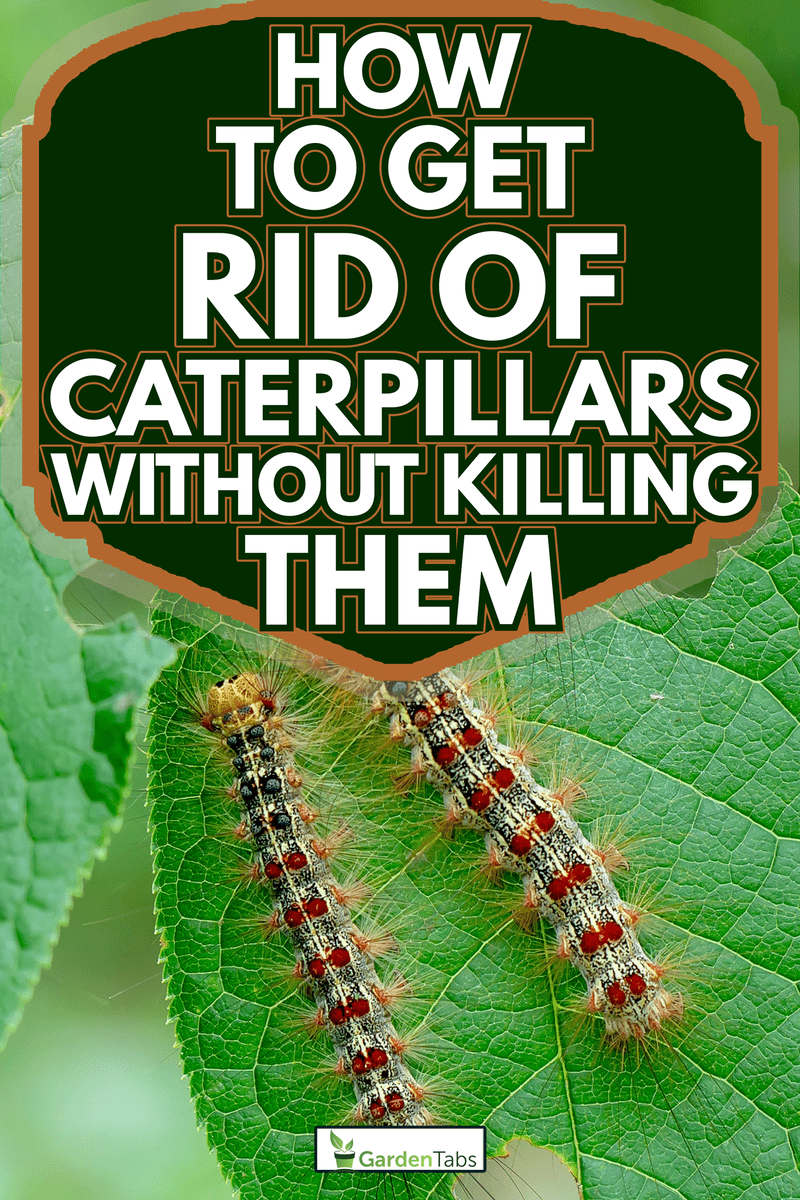
Getting Rid Of Caterpillars Without Killing Them
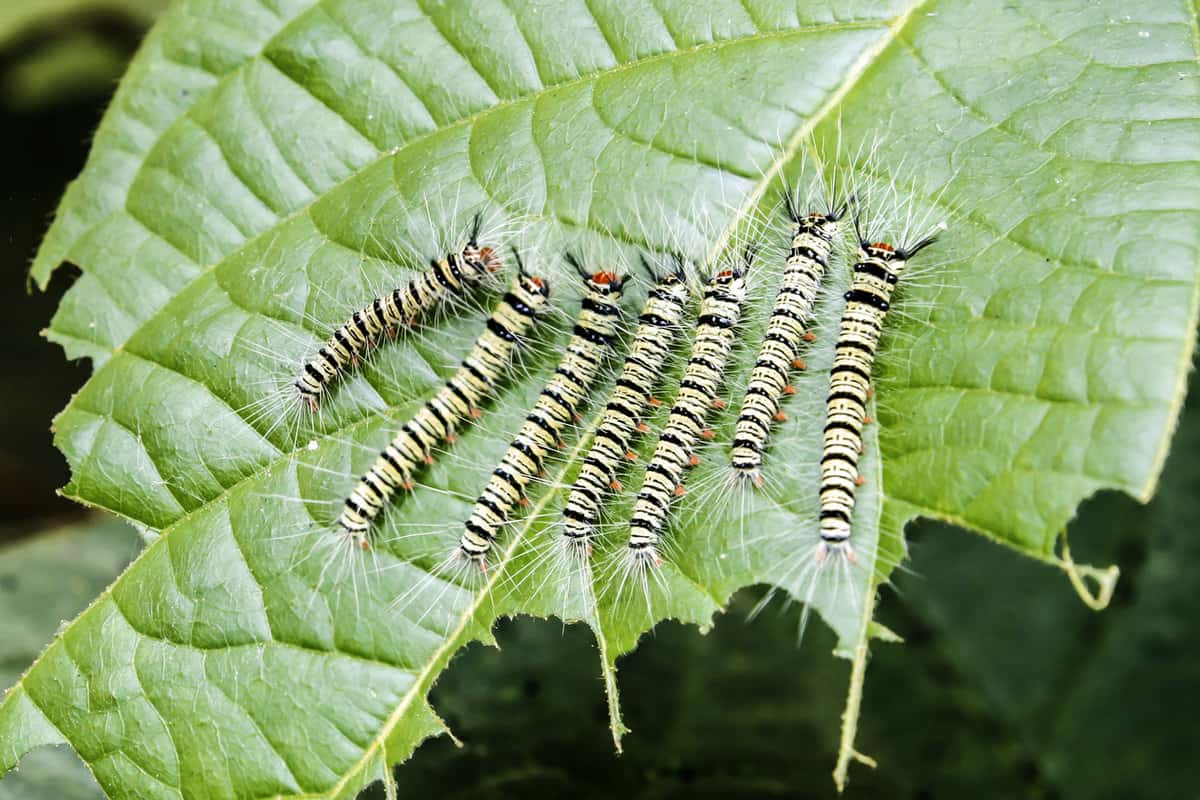
Here we'll talk more about how you can rid your garden of these pests without killing them.
Soapy Water
Soapy water can be placed in a spray bottle and misted in the garden to prevent further caterpillar damage. Before using soapy water on your whole garden, be sure to test out a small portion. This will determine if the soap used is too strong. The ratio of soap to water should be about 2 to 1.
This method works by coating the leaves and making them too slippery for any bugs to crawl on and eat. The insects will eventually give up and set up camp elsewhere. Caterpillars rely on their source of food being easy to access and close by. Slippery leaves just became the new eviction notice!
The Downsides Of Using Soapy Water
Obviously, not all plants will tolerate the shower of soapy water routine. Some plants may not be suitable for the increase in moisture. Other plants may develop brown spots or droop.
This is why it is important to test a patch of your garden before treating the whole area. Another potential downside is this treatment becomes a consistent part of your gardening routine. A one-time spray is not very effective.
Click here to view these reusable spray bottles on Amazon.
Cardboard/Aluminum Foil
Caterpillars will often lay their eggs at the base of a plant. By blocking it off with cardboard or aluminum foil, the chance of insects laying their eggs on your plant decreases.
This may work better as a preventative action versus directly targeting the caterpillars. The barrier could be combined with the soapy water method to increase the effectiveness. In addition, removing the bugs by hand will take care of the grown larvae while the tin foil prevents them from laying eggs.
Using aluminum foil will reflect light onto the plants and deter bugs. A common method in the past was cutting up strips of aluminum foil and mixing it in with mulch. This runs the risk of getting aluminum into the soil food web, but it can also blow away and pollute the land.
Remove By Hand
Sometimes, the best way to get rid of caterpillars is to pluck them right off. This includes looking under leaves for baby caterpillars and searching the base of plants for eggs.
Although, you may not want to pluck them and throw them back into your garden. Try putting them in your compost bins. They will aerate the compost as they move around as well as add to the diversity of the bin! The number one rule of gardening is to keep it diverse!
If you do not have a compost bin, it is recommended that every garden have one! Compost uses carbon and nitrogen from organic scraps and turns them into soil. If you need help creating your compost bin, check out this article: What To Put In A Compost Pile To Start It Going?
If grabbing bugs makes you feel icky, use gardening gloves.
Click here to see these gardening gloves on Amazon.
Products That Should Be Avoided
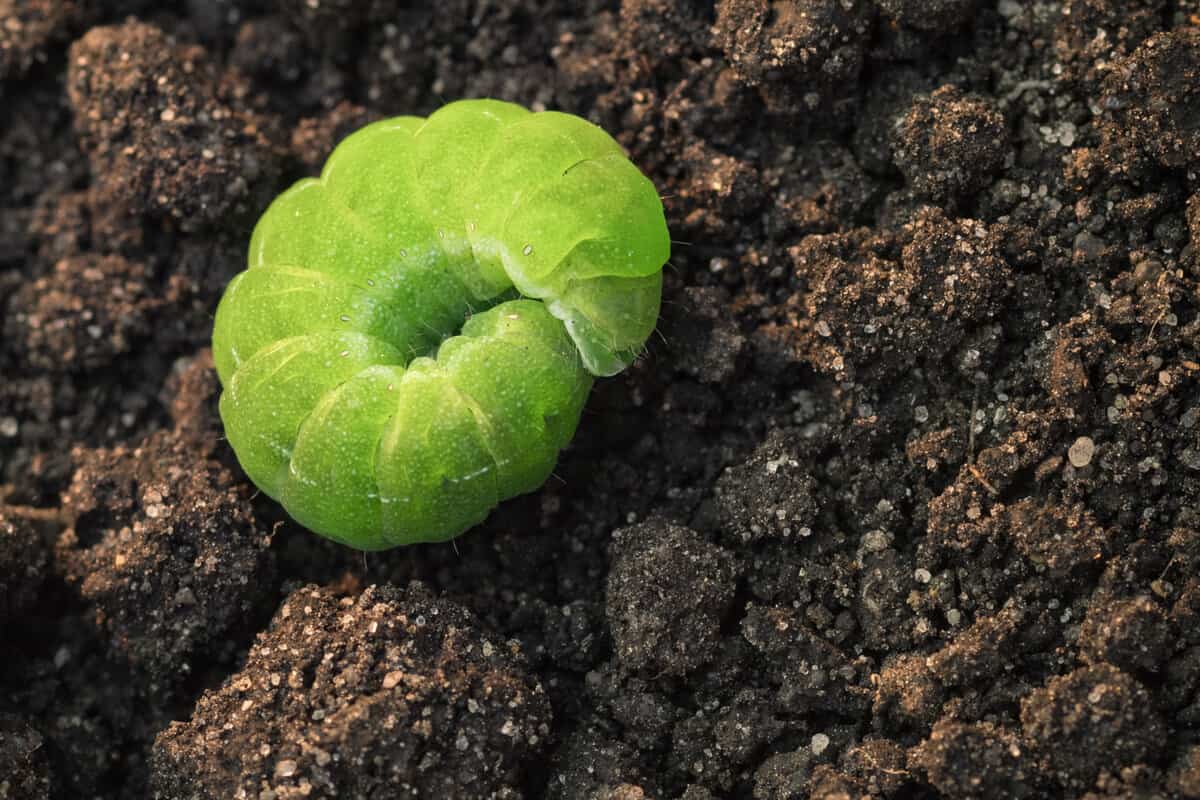
Bacillus Thuringiensis
Picture perfect: you treat your garden with a natural and organic pesticide that doesn't kill caterpillars. Since it is all-natural, it doesn't affect any plants either. Sounds nice, right?
Think again!
Bacillus thuringiensis is a naturally occurring bacteria in the soil. When there is too much in the soil, the imbalance becomes detrimental to the caterpillar (paralysis).
Many natural and organic pesticides will load their product with this bacteria. Using it in your garden will not affect any other plant life around, but it will paralyze the caterpillars' digestive systems.
Canola Oil
Some people will mix canola oil and dish soap to create a natural pesticide. A few tablespoons of this mixture would go into a spray bottle with one cup of water.
Then, it would be sprayed on the leaves of plants and the insects themselves. Unfortunately, caterpillars often suffocate after ingesting vegetable oils and similar products.
Vinegar
This is another natural pesticide that has been used in gardens to kill all unwanted pests. A little bit of vinegar in a few liters of water has been praised for killing bugs. The acidity of the vinegar is so potent it can kill them.
Alternatively, smaller bugs like aphids and fruit flies are attracted to vinegar. If you have an already existing aphid situation, that's just one more reason not to use inegar in your garden.
How Can You Tell If Caterpillars Are Around?
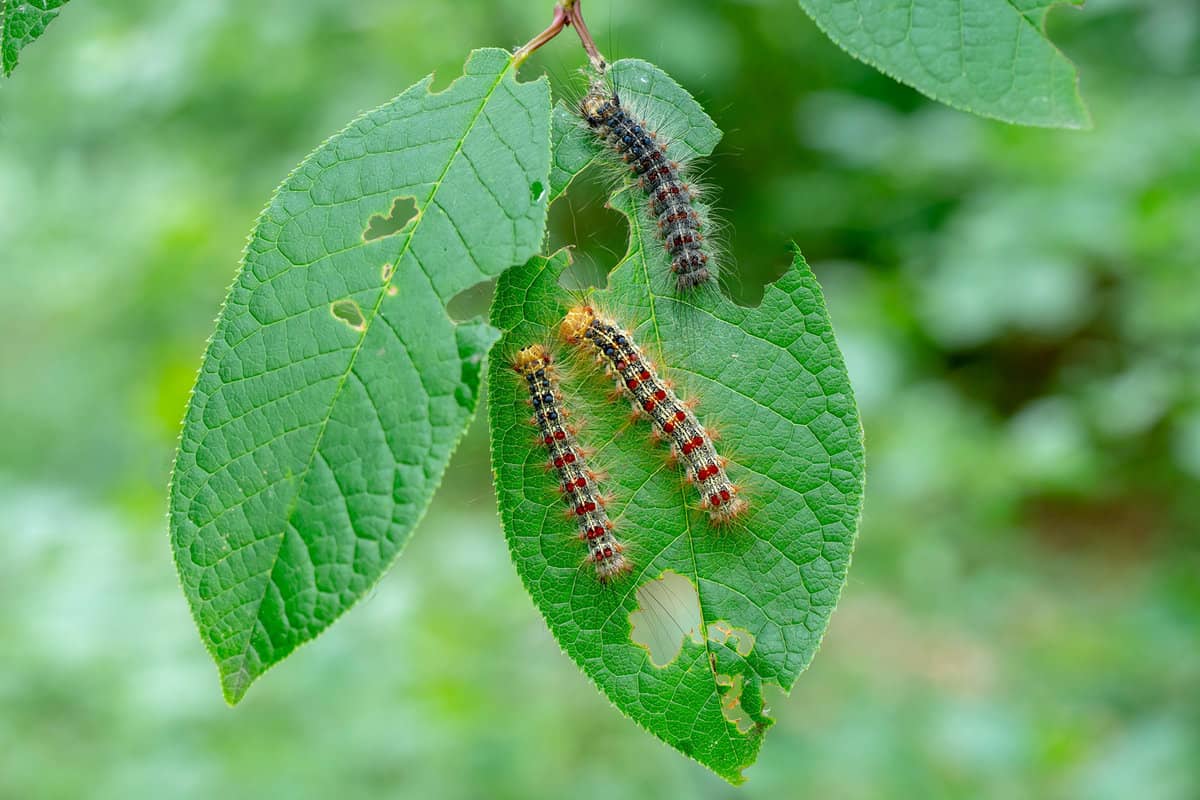
The number one sign of a caterpillar infestation is leaf mining. If there are bite marks in a handful of your leaves, you probably have a bug problem. Caterpillars are the larval stage of moths and butterflies. As a result, they eat all day long to prepare for metamorphosis. They definitely know how to get their grub on!
Unfortunately, gardens are not the only place caterpillars love to stop by for lunch. Caterpillars become desperate for food because they run out of it so quickly. That means they may invade your pantries (or closets) and lay their eggs in your home.
If you see holes in your clothes or packaging, you might have moths. Be sure to look for them in their egg and caterpillar stages near any food supply.
What Causes A Caterpillar Infestation?
Caterpillars are attracted to all types of plants, from trees to clover. So there probably isn't a specific plant that is attracting them. In all honesty, caterpillars will inevitably be attracted to any well-kept garden. Consider it a compliment that these pollinators chose your garden!
If the larvae are inside your home, then you must have cracks in a wall or perhaps an open window. Take that up with your roommates or landlord!
Why Is It Important To Keep Caterpillars Alive?
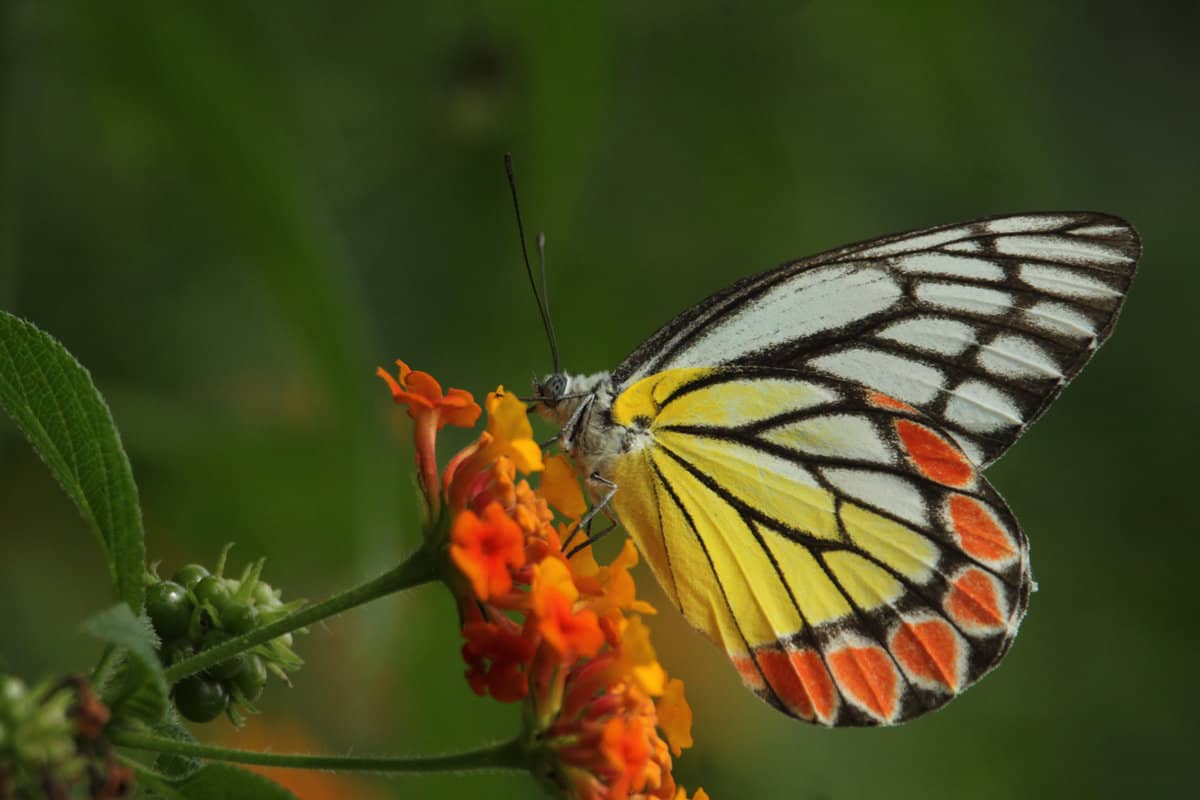
Caterpillars turn into butterflies and moths—arguably some of the most important creatures on this planet. These pollinators will drink nectar from flower to flower, transferring pollen as they move. Without these insects, the crops we rely on as the fundamentals of our diets would vanish.
The life cycle of these pollinators begins with the egg that may be in your garden right now. When the egg hatches, the larvae come out. At this stage, the insect is a caterpillar.
As we covered earlier, you know how much this bug eats. Then, in a few weeks, the caterpillar will go into a chrysalis. Finally, a beautiful pollinator will make its debut!
But, if people kill every caterpillar they see in their garden, we wouldn't have any butterflies or moths. They are a major part of our food web. If crops do not get pollinated properly, we will lose diversity in our plants. Keeping caterpillars alive is one way you can save a little bit of the planet each day.
Hope We Didn't Bug Ya!
Thank you for reading our post on getting rid of caterpillars without killing them! Having caterpillars eat up your crops is never fun. However, you should be honored that your beautiful garden has attracted them! Be mindful when you are in search of methods to get rid of them. Remember, you can always:
- Spray soapy water on the leaves
- Wrap cardboard or aluminum foil around the base
- Pluck them right off the plant
But when in doubt, never:
- Use sprays with bacillus thuringiensis
- Spray canola oil on the leaves
- And we mean never, kill a caterpillar
Check out some of our related garden posts, such as:
How To Get Rid Of Leaf Miners On Citrus
How To Get Rid Of Codling Moth In Apple Trees [7 Practical Methods]


